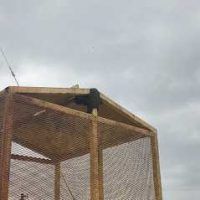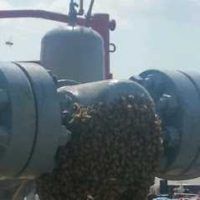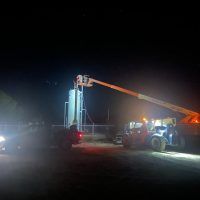Pest Control Services in Dilley, TX
Effective Pest Control Strategies for Dilley, TX
Effective pest control in Dilley, TX begins with accurate identification. Common intruders like ants, roaches, and rodents behave differently depending on the season and structural layout of the property. Identifying entry points, food sources, and nesting zones is the foundation of any effective treatment. Without this step, surface-level solutions often lead to recurring problems.
Ensure that strategies are tailored to each specific variety. Ants typically call for both baiting and border discussion, while roaches respond better to a combination of sanitization efforts and gel bait placements in high-humidity zones. gnawer issues unremarkably stem from geomorphologic gaps or food approach, requiring censure work aboard trapping. Each discussion plan ought to match the behavior and biota of the quarry pest.
Environmental safety is also a key consideration. In homes with pets or children, technicians may recommend low-toxicity options and physical barriers. In all cases, strategy matters more than speed, and long-term results depend on informed, site-specific actions. For
honeybee removal, ethical relocation is preferred.
Three generations proudly serving the Dilley, TX community.
Indoor treatments are odorless, pet-safe, and child-safe solutions.
We specialize in safe, efficient honeybee hive relocation
Our pest control team is licensed, bonded, and insured.
Integrated Pest Control Strategies for Dilley, TX
Pest management in Dilley, TX necessitates a more comprehensive approach than a simple spray-and-go method. It begins with a detailed inspection to identify the type of pest and the extent of the issue.
Integrated Pest Management IPM is a science-based strategy that focuses on long-term prevention and control. Each of these requires a different response, which is why accurate identification and site-specific planning are essential. Common concerns in the area include ants, roaches, rodents, and occasional honeybee hives.
Control methods often combine several approaches: exclusion (like sealing entry points), sanitation (removing attractants), and targeted treatment with low-toxicity products. For example, indoor treatments might include pet- and child-safe formulations that are odorless and applied precisely to avoid unnecessary exposure. Outdoor areas may benefit from barrier applications or habitat adjustments to reduce breeding zones. The goal is always the same—reduce pest pressure while protecting human health and the local environment.
Because every structure and pest situation is different, it’s important for homeowners and business owners in Dilley to understand their options. A reliable pest management plan isn’t just about what product is used—it's about timing, placement, and monitoring effectiveness. Asking the right questions and understanding the process allows property owners to make informed decisions about how their pest challenges are addressed. Whether you're managing ants in a kitchen or dealing with seasonal roach activity, an integrated strategy built around safety and precision is the most effective approach.
Leading Pest Containment Solutions in Dilley, Texas
Pest control in Dilley requires more than a general spray and go. The conditions that invite pests—like moisture buildup, structural gaps, and accessible food—need to be addressed before long-term solutions can take hold. Whether in residential homes or commercial buildings, identifying the source of activity is the first step toward truly effective containment.
Different pests demand different strategies.
Roaches pest control often targets areas like kitchens, drains, and wall voids, where these pests thrive unnoticed. In contrast, ant pest control tends to focus on baiting methods that interrupt the colony at its source. Bees are vital pollinators and often protected, so their removal should focus on live relocation rather than extermination.
With
flea pest control, attention to both the interior environment and pet care is crucial, since untreated bedding or carpet can quickly restart the cycle. Honeybee removal is a special challenge. Regular inspections, sealing up of access points, and understanding each pest's behavior can prevent infestations from starting.
If a hive is discovered inside walls or high in trees near a structure, it's important to work with someone trained in careful extraction to avoid harm to both bees and property.Ultimately, pest containment in Dilley depends on ongoing awareness. Knowing when to act and how helps homeowners and businesses stay ahead of potential issues.
FREQUENTLY ASKED QUESTIONS
What kinds of pests are most common in Dilley, TX?
In this part of South Texas, ants, roaches, fleas, and rodents are seen frequently—especially during warmer months. Occasionally, honey bee swarms also show up near homes or outbuildings. Dry conditions followed by sudden rains often bring pests indoors seeking shelter and food.
Can honeybee hives be removed without harming the bees?
Yes. Bee relocation is different from standard pest control. A trained technician can safely extract the hive and relocate it—typically to a local beekeeper or a rural area—without killing the colony. This method supports pollination efforts while keeping your home safe.
How can I tell if my home has a flea issue?
Fleas can be hard to spot at first. You may notice itchy bites on your ankles or legs, or see your pets scratching more than usual. A simple test: place a white towel where your pet sleeps. If dark specks show up, it may be time to look into fleas pest control.
Why do ants keep returning even after treatment?
Ants often come back when the source—the colony—isn't fully addressed. Surface sprays may only deter visible ants, not the nest. Long-term solutions usually involve locating entry points and using baits that disrupt the colony itself, especially during dry seasons when ants seek moisture indoors.
Is indoor pest control safe around kids and pets?
Most modern indoor treatments use materials with low or no odor and are designed to be safe after they dry. It’s a good idea to keep children and animals out of treated rooms for a short time, just to be cautious, but today's formulations are far safer than older ones.
Our Reviews
Get In Touch
Fill in the form or call us (830) 876-5544
384 Cox Lane Road, Carrizo Springs, Texas 78834, United States











